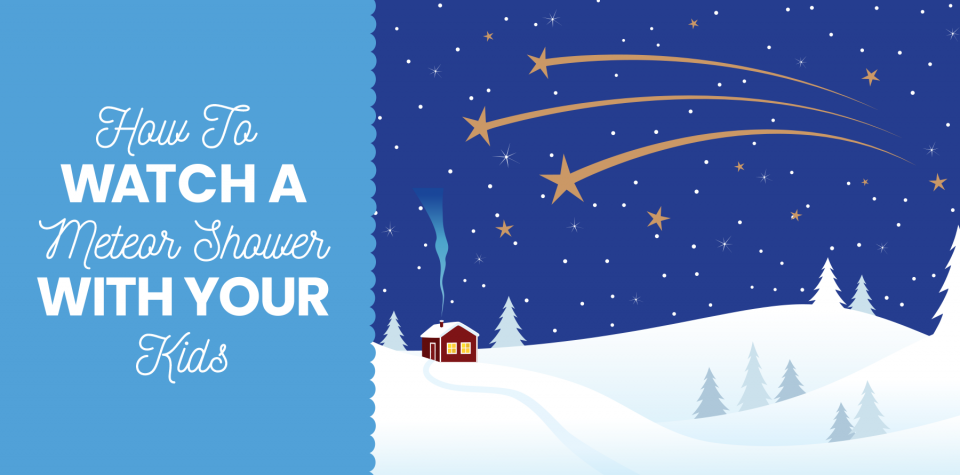
How to Watch a Meteor Shower with Your Kids
There’s nothing quite like watching a meteor shower with your kids. You can read all the books in the library about space, make cool tabletop projects, and watch great videos, but the wonder in their eyes and their joyful shouts of “I saw one! I saw one!” as pieces of rock streak across the sky are priceless.
Every year, early January brings one of the best meteor showers in the Northern Hemisphere. On the nights of January 2-3, the Quadrantids meteor shower will reach its peak intensity, with anywhere from 25 to 200 meteors per hour.
This month, before you bundle up and catch a show of cosmic proportions, we’ve got some tips to make your outing a great one.

Plan It Out
Several organizations publish calendars of meteor showers, including predictions for how intense they’ll be from year to year. You can check them to see whether a meteor shower is likely to be worth watching. We like the calendars from the International Meteor Organization and the American Meteor Society.
Head for the Dark
You’ll see more of the meteor shower if you can find a dark patch of sky. Try to get 20 to 30 miles away from the nearest city if you can. If you can’t, head for the edge of the city and try to get a view out toward a darker area, like the ocean or wilderness.
Get Comfy
It can take a while to get your fill of meteors, so you’ll have to be prepared against the cold. Dress the kids in toasty layers, and make it a cozy adventure by bringing a waterproof ground tarp, blankets, sleeping bags, and a thermos of something warming like hot chocolate.
Be Patient
Meteor showers are unpredictable, and it can take up to 30 minutes for your eyes to adjust to the dark completely, so it might be a while before you spot anything. To keep crankiness and boredom at bay while you wait, bring along snacks and a backup activity. A favorite space audiobook is one great way to keep kids engaged while you scan the sky.
Watch the Whole Sky
Each meteor shower gets its name from a constellation its meteors appear to streak away from (the Quadrantids get theirs from an old constellation named Quadrans Muralis). But they can show up anywhere in the sky, so don’t get too focused on one spot!
Avoid Moonlight
Most meteors are pretty faint, and a bright moon can prevent you from seeing them. To get the most out of your meteor watching, try to catch a meteor shower on a night with little or no moonlight.

